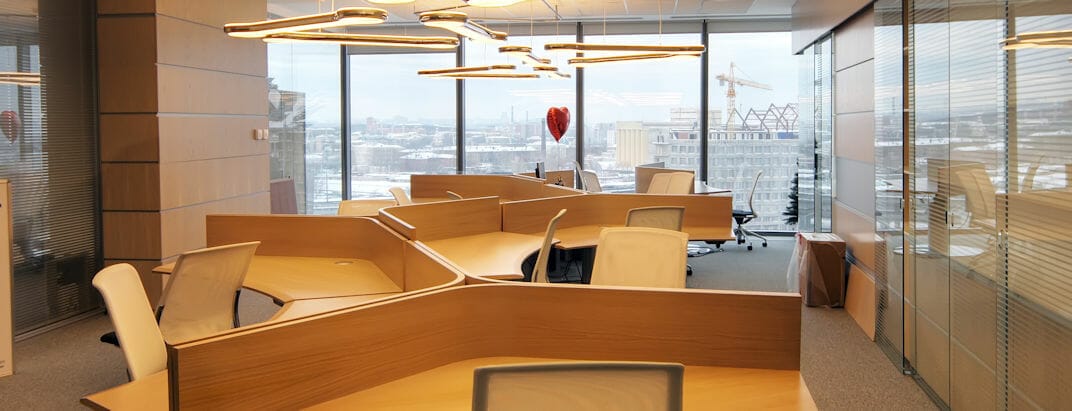
As part of a workplace change team, you’ve probably already thought about the enormous challenges of transitioning your organization from an office full of desks and cubicles to a shared work environment.
You’ve got a planning and execution team to help manage all the moving parts. You’ve got help from experts on the design, architecture, buildout, the space design and amenities, the furniture, and even the technology. But what’s missing? Do you have a ‘people transition plan?’
You say you want a revolution? Team members must be on board
At some point in every organization’s history, there comes a time for a revolution. Whether there are 200 or 20,000 team members faced with change, you can bet that most of them are saying the same thing: “There better be a really good reason for me to go through this painful process, so give it your best shot.”
So, when your plans involve radical personal change like taking someone’s personal desk away, you can’t just send out a note that says “After June 1st, you’ll no longer have your own desk, and you’ll be able to work wherever you want.”
What does it take to convince the enterprise to accept a shared work environment – and like it? You need to engage in a three-phase change process:
Phase 1: Individuals are prepared through Work Practice Change: In the first phase, each team member learns how and why the decision to change was made and who made it. They are then given rational, convincing arguments for accepting the change, learning to appreciate the benefits the new workplace has to offer. In order to work and manage effectively in this new work environment, team members and their managers are provided training to update their communication and collaboration skills, to be accountable and productive, to earn trust while working in a distributed team, and guidance for adopting digital workplace routines.
“We cannot slow the rate of technological advance or globalization, but we can invest in employees’ skills to increase the resilience of our people and organizations.”
Jonas Prising, Chairman, CEO, ManpowerGroup
Phase 2: Teams adapt to new experiences through Work Place Orientation: Effective, timely workplace orientation is essential when moving to a reinvented workplace. Before they get there, teams are provided a preview of their workplace options, equipment, how to select and reserve a space, and all about workspace features. They’ll learn how to make the most of their new technology, and will receive just-in-time instructions for making the move and settling in. Only then can they begin working as a team in the new workplace putting their Phase 1 skills to work.
Phase 3: The enterprise becomes ‘one in mission’ through Work Force Synergy: In this final phase, traditional barriers are broken down through a new level of enterprise synergy. When executed properly, everyone in the enterprise – including those in the next department, in the next building, or on the next continent – will find themselves experiencing the cultural shift together. Like a school of fish swimming and turning in unison, team members will begin to feel one in mission, having common drivers, missions and mindset. Teams will work closer together even when apart, generations will capitalize on their differences, and everyone will engage in healthy, safe and secure practices, all while cross-functional teams begin to synergize on mission-critical projects.
Transitioning the workforce quickly and confidently
To make workplace change actually happen, you need to first change the individuals, then change the teams, then change the culture…in that sequence. To borrow from the military, this level of change is best begun with a pre-planned “Shock and Awe” process that transitions the workforce quickly and confidently away from the old and toward the new with as little disruption to operations as possible.
Easy? No.
Doable? Absolutely!
Once your organization has reached a tipping point where workplace change is adopted by the majority, the changed state becomes the new normal, then it’s full steam ahead until the next big technology-induced change.
Are you ready for a revolution?
___________________________________________
See the Evolving Workplace e-Learning Series: Technology-enabled workplace change can only be successful if the people change too. The e-work.com Evolving Workplace e-Learning Series modules accelerate workplace change through a deliberate mindshift in individuals, teams and the enterprise to work together in new ways.
Once you’ve received approval for the new workplace and developed a great buildout plan, your attention should now focus on gaining enterprise buy-in. Register to see the Making the Case for Change Course Summary.